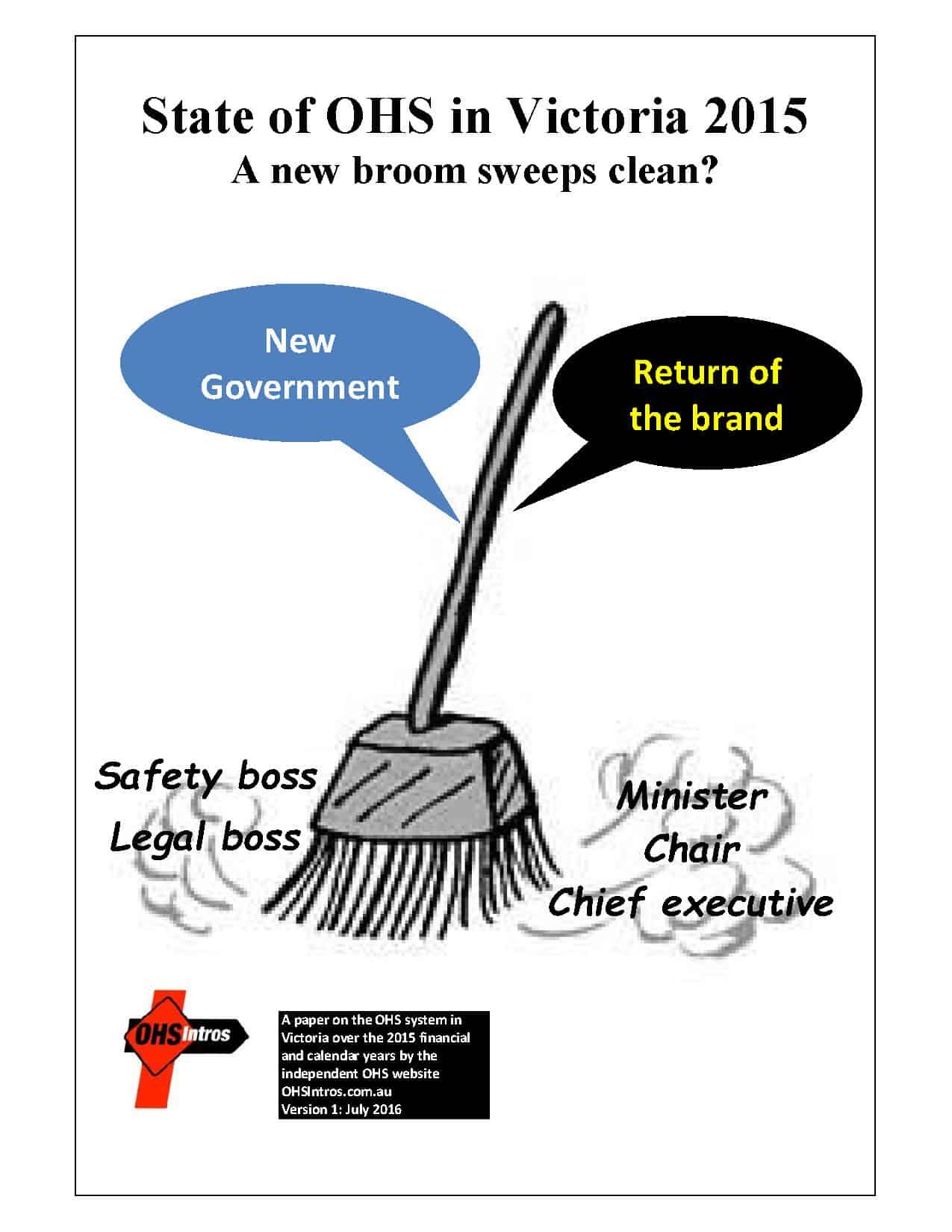[This article from 2015 was previously password-protected and is now available to all] Recently a couple of media outlets referred to a report produced by Citi into workplace safety issues related to the top 100 companies on the Australian stock exchange. The report, “Safety Spotlight: ASX100 Companies & More” (not available online), provides a useful…
Category: evidence
Underwear, sand, sun and safety culture
In October 2016 the Centre for Sustainable HRM and Wellbeing at the Australian Catholic University (ACU) will be welcoming Professor Wayne Hochwarter. Although, according to ACU, he is a “leading international authority on organisational behaviour research, his name was new to me. ACU advised that Professor Hochwarter has experience in the following areas: Employee entitlement…
Is it time for on-the-spot fines in Victoria?
The public comment phase of the Victorian Government’s Independent OHS Review into WorkSafe Victoria has concluded and most of the submissions are appearing on the review’s website. Some submissions are extensive, others are simply a whinge. One topic did not get much of a mention in the 40 submissions currently available – on-the-spot fines. The…
Workplace suicide reflection
A letter to the Australian & New Zealand Journal of Psychiatry (subscription only) has provided a slightly different perspective on the Australia suicide statistics released earlier this year, and some of the reporting on the statistics. This is an important perspective when considering suicide interventions.
Allison Milner and Andrew Page note that the Australian Bureau of Statistics suicide data only covered the last 10 years which misses out on a comparison from last century which would show the change from 2013 to 2014 to be “less noteworthy”.
On the issue workplace suicides, Milner and Page advocate the integration of prevention strategies into the workplace but also write that
“Workplace suicide prevention activities show promise, but more rigorous evaluation is needed”.
The authors emphasise that
“Perhaps the more important message from the most recent statistics is that suicide among older age males (⩾60 years) and middle-aged males (45–59 years) continue to increase….”
This is an important consideration should your workforce match these demographics.
Milner and Page urge readers to focus on evidence-based approaches to suicide prevention. Such evidence will assist OHS professionals and business owners in considering a worst-case mental health scenario and adjusting these measures to match the mental health profiles of their workplaces and that of their clients.
The research also serves as a caution against immediate commentary on statistics by showing a measured assessment of data. Much of the statistical and academic research reports are murky and complex because the audience is, primarily, academic peers but time and reflection allows for alternate perspectives and, sometimes, plain English translations.
Evidence to support Stand Up, Sit Less, Move More
Office workers need to exercise more. This is one of the simplest occupational health and safety (OHS) statements that can be made. Whether one stands while answering a telephone, walks to a photocopier, have a walking meeting or take the stairs instead of the lift or escalator, you will be healthier by moving. Too often this simple OHS message is confused by sellers of apps, products, furniture and training courses that promise success from a single intervention. The way to avoid this is to look at the research and some recent Australian research into sedentary work is a useful reference in determining workplace safety interventions.
The research “A Cluster RCT to Reduce Office Worker’s Sitting Time: Impact on Activity Outcomes” has been written by a swag of researchers from around Australia and found that a:
“workplace-delivered multicomponent intervention was successful at reducing workplace and overall daily sitting time in both the short- and long- term.”
Royal Commission into juvenile detention should include OHS
Vision of the mistreatment of children in juvenile detention centres in Australia’s Northern Territory was aired on the ABC Four Corners program on 25 June 2016. Within 24 hours, Prime Minister Malcolm Turnbull announced a Royal Commission into juvenile detention. The treatment shown was not new and had been known by the NT Government and Ministers for several years but the quick decision for a Royal Commission shows the political influence of television and current affairs programs. Although not yet written, part of the Royal Commission’s terms of reference should be the investigation of the workplace safety context of juvenile detention centre management and the treatment of the young inmates. Continue reading “Royal Commission into juvenile detention should include OHS”
Independent analysis of WorkSafe Victoria
 Barry Naismith‘s third report into the operations and performance of WorkSafe Victoria was released on July 22, 2014. Naismith produces these reports through a combination of publicly available information in the press, a dive into the resources of the WorkSafe Library (visit before it moves to Geelong) and requests to WorkSafe. This level of analysis and interpretation is rarely available outside of formal academic research and Naismith provides the all-important social and political context from which much academic occupational health and safety (OHS) research shies.
Barry Naismith‘s third report into the operations and performance of WorkSafe Victoria was released on July 22, 2014. Naismith produces these reports through a combination of publicly available information in the press, a dive into the resources of the WorkSafe Library (visit before it moves to Geelong) and requests to WorkSafe. This level of analysis and interpretation is rarely available outside of formal academic research and Naismith provides the all-important social and political context from which much academic occupational health and safety (OHS) research shies.
His latest paper focuses on 2015. Continue reading “Independent analysis of WorkSafe Victoria”
